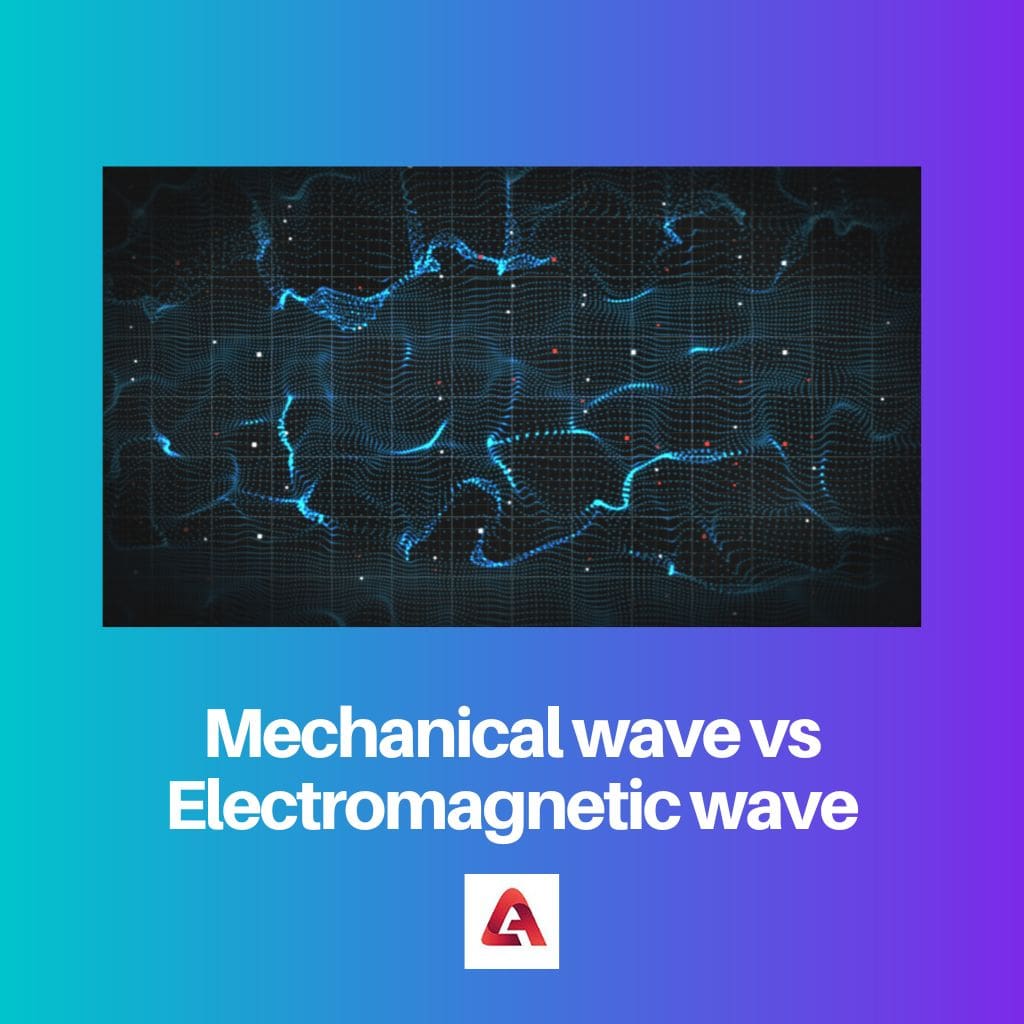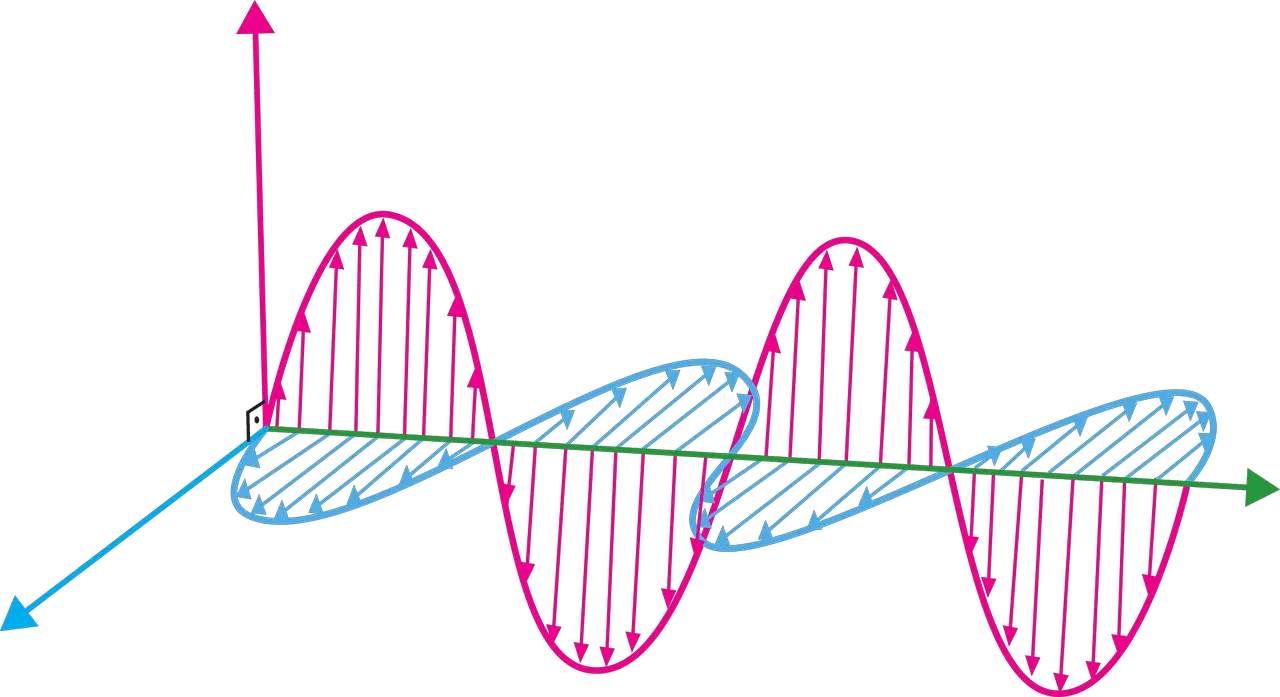For Physics aficionados, the different waves and their characteristics could be crystal clear. Still, for others, the difference between mechanical and electromagnetic waves may not be easy to grasp.
Key Takeaways
- Mechanical waves require a medium to travel through, such as air, water, or solid materials, and include sound waves and ocean waves.
- Electromagnetic waves can travel through a vacuum, consisting of oscillating electric and magnetic fields, and include light, radio waves, and X-rays.
- The need for a propagating medium distinguishes mechanical waves from electromagnetic waves, which can travel through space.
Mechanical Wave vs Electromagnetic Wave
Mechanical waves are waves which cannot travel without a medium. That’s why these waves’ speed depends on the speed of the medium. Mechanical waves have three types. Electromagnetic waves can travel without any medium. These waves travel at the speed of light. These waves come into existence due to the changing electric and magnetic fields.

Another stark difference between the two is that the distance travelled by mechanical waves depends upon the medium’s elasticity. In contrast, the characteristics of an electromagnetic wave depend upon acting magnetic and electric fields.
These two types of waves also vary in their speed. A mechanical wave travels much slower than an electrical wave which travels as fast as light.
Comparison Table
| Parameter of Comparison | Mechanical Waves | Electromagnetic Waves |
|---|---|---|
| Medium | Cannot travel without a medium | Can travel without a medium |
| Factors affecting | Elasticity and inertia | magnetic and electric fields |
| Speed | Travels with the speed of the medium | Travels at the speed of light |
| Types | Transverse and Longitudinal | Only Transverse |
| Examples | Sound waves, surface waves | Microwaves, Radio waves, etc. |
What is Mechanical Wave?
According to definitions, mechanical waves are waves that result from oscillating matter, and their movement carries the wave forward.
Therefore, a mechanical wave can harbor speed limited to the medium’s speed and can only move in the direction that the medium carries it.
A mechanical wave can be longitudinal, transverse, or surface wave. A longitudinal wave is formed when the particles of the medium oscillate parallel to the forward direction of the wave.
A transverse wave is formed when the particles of the wave vibrate perpendicular to the direction of movement, while a surface wave is formed when the waves move at the interface of two media.
What is Electromagnetic Wave?
Electromagnetic waves are the result of accelerating electrically charged particles that, intern affect other particles around them.
An electromagnetic field results from changing electric and magnetic fields whose directions point 90 degrees to each other.
Since electromagnetic radiation consists of no particles and only oscillating electric and magnetic fields, they do not need any medium to propagate. They can thus travel through a vacuum.
In other words, electromagnetic waves are made of photons, uncharged particles that can travel at the speed of light. These waves propagate energy, momentum, and angular momentum away from the source.
As these photons move away from their parent source, it no longer requires a continuous supply of energy to keep them in motion and thus create the far field.

Main Differences Between Mechanical Wave and Electromagnetic Wave
- An example of a mechanical wave is a sound wave. In contrast, microwave, radio waves, infrared, ultraviolet rays, X-rays, Visible light, and gamma rays are examples of electromagnetic waves.
- Mechanical waves result from oscillating matter, and their movement carries the wave forward. In contrast, Electromagnetic waves are the result of accelerating electrically charged particles.
- https://onlinelibrary.wiley.com/doi/abs/10.1002/adom.201900267
- https://www.astm.org/DIGITAL_LIBRARY/JOURNALS/GEOTECH/PAGES/GTJ10999J.htm

The article provides a sophisticated yet engaging explanation of mechanical and electromagnetic waves. Kudos to the author for an outstanding piece of work!
Absolutely! It’s a well-researched and well-articulated article that deserves praise.
Completely agree. The article beautifully captures the essence of both mechanical and electromagnetic waves.
I find this comparison between mechanical and electromagnetic waves awe-inspiring. It pretty much sums up the difference between the two in a well-written manner. I think anyone can understand the disparities after reading this article.
Absolutely, the comparison table provided makes it easy to differentiate between mechanical and electromagnetic waves.
Yes! The article breaks down the concept of both types of waves in a comprehensive way. Kudos to the author.
The detailed analysis in the article is brilliant. It provides a thorough understanding of mechanical and electromagnetic waves, which is greatly appreciated.
Absolutely! It’s a well-organized and informative article that makes learning about physics enjoyable.
The article’s approach to illustrating the differences between mechanical and electromagnetic waves is commendable. It makes complex physics concepts easy to comprehend.
Absolutely! The clarity and depth of the article are praiseworthy. It’s an excellent resource for students and enthusiasts.
The explanation is thorough and detailed. It makes the topic easily understandable for those who are not familiar with the concepts of waves.
The article is enlightening and concise. It remarkably brings out the differences between mechanical and electromagnetic waves. A must-read for anyone interested in physics!
I couldn’t agree more. The article is an excellent resource for understanding these wave phenomena.
Absolutely! It’s a well-researched and engaging article that makes learning about waves fascinating.
This article is commendable. The simple yet in-depth explanation of both wave types is exceptional. It doesn’t just inform but also engages the readers.
Absolutely! The article does a great job simplifying complex physics concepts.
I totally agree. The author’s approach makes learning about waves enjoyable.
The article offers a comprehensive comparison between mechanical and electromagnetic waves. It succeeds in making the subject accessible to a wide audience.
Absolutely! It’s a fantastic resource for anyone wanting to understand the fundamental differences between these waves.
The article is informative and well-structured. It enlightens the readers about the similarities and differences between mechanical and electromagnetic waves. A good read!
Completely agree. It’s articles like this that make learning about physics enjoyable.
Absolutely, the author did a great job. The comparison table really helps clarify the distinctions.
I think the article provides a definitive explanation of mechanical and electromagnetic waves. It is an outstanding piece of work that deserves much praise.
Absolutely! The comparisons and details are superb. A great resource for anyone studying physics.